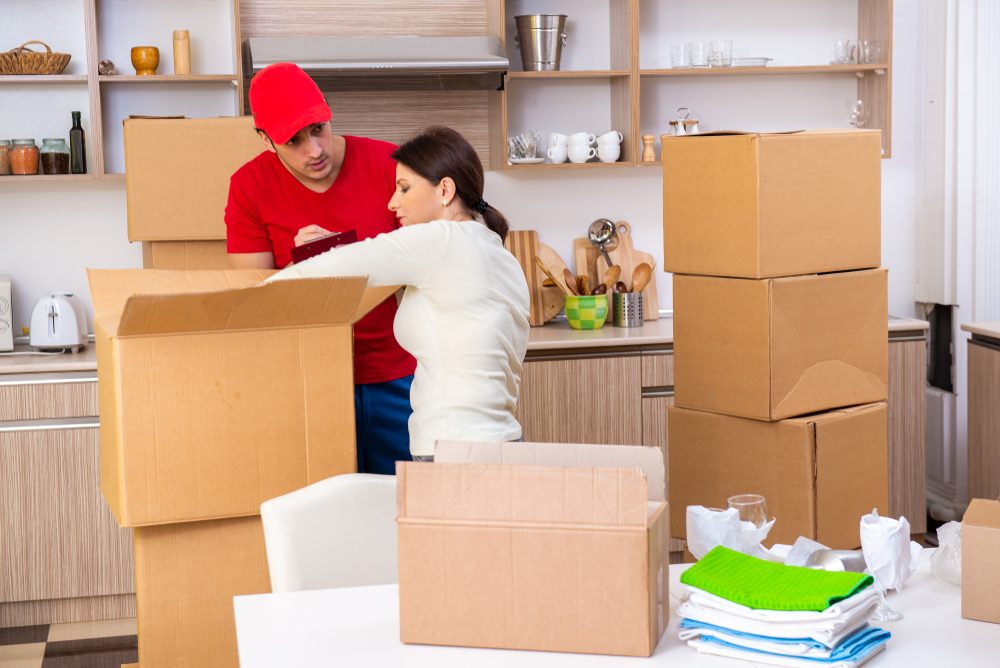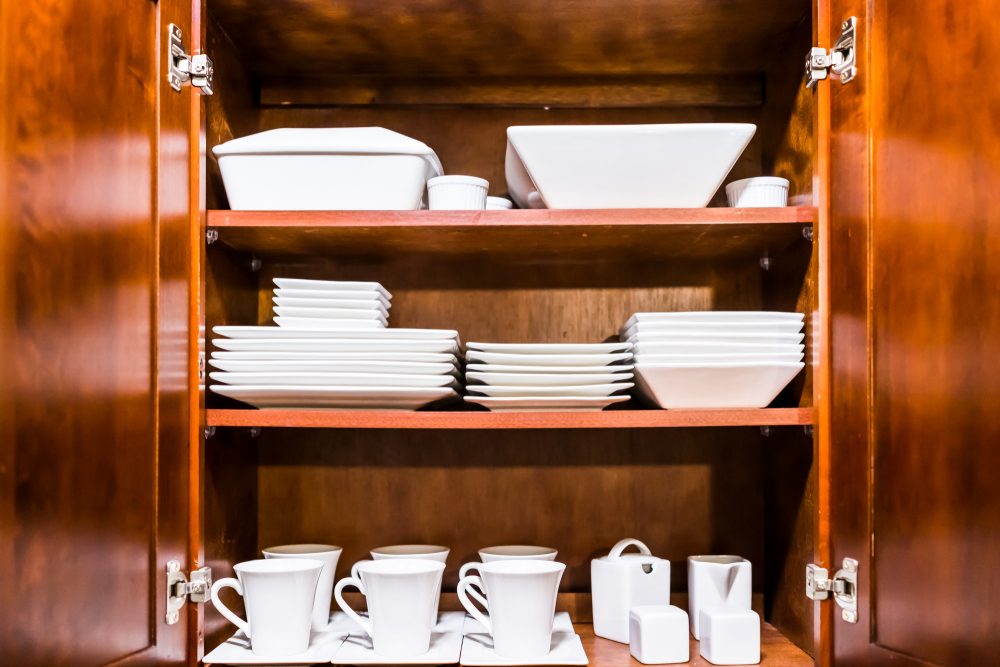When you’re moving, one of the most daunting tasks can be packing up your kitchen. It seems like there are so many little things to remember, and it can be hard to know where to start.
This comprehensive guide will walk you through the main steps for packing a kitchen. We’ll give you tips on packing everything from pots and pans to spices and cereal.
Follow these tips, and soon your kitchen will be ready for its big move!

Gather All the Materials You Need
When packing up a kitchen for a move, there are a few essential items you will need to ensure that everything stays safe and organized.
It’s a good idea to get some packing paper or bubble wrap to protect your dishes and glassware from breakage. It is also helpful to have a marker on hand to label the boxes, as well as some ziplock bags and tape.
If you have any delicate or valuable items, you may want to invest in some specialty packing materials designed specifically for them.
Moving boxes are a necessary part of any move. They come in all shapes and sizes, each designed for a specific type of item.
When choosing moving boxes for kitchen items, it is important to choose the right type of box for each piece. For example, you need reinforced boxes for dishes, glasses, electronics, and pots and pans to prevent breakage. The boxes should be padded to keep items from shifting during transport.
Boxes for clothing and linens need not be as sturdy. They may need additional compartments or dividers to help keep items organized and safe.
There are a few different places where you can get moving boxes. Some grocery and big box stores sell special boxes designed with moving in mind. These stores may also have some ordinary boxes they are willing to give away for free. You can check online sources such as Freecycle or Craigslist.
Label Each Box
Clear labeling is essential with so many different items to keep track of when packing a kitchen.
By clearly labeling each box with its contents, you can save yourself a lot of time and frustration when it comes time to unpack. Clear labeling can also help prevent breakage. If you know that a particular box contains fragile items, you can take extra care when handling it.
Keep the Essentials Aside
Moving can be stressful, and the last thing you want to do is track down your essentials once you’re in your new place. To make sure you’re prepared, take inventory of your kitchen before you start packing.
Make a list of all the items you use on a daily basis, including plates, cups, utensils, and pots and pans. These are the items you’ll want to keep handy during the move, either by packing them in a separate box or by keeping them with you on moving day.
Start With the Big Items
The first step is to start with the big items. Take stock of what you have and decide what you’ll keep, sell, or donate. If you’re keeping your pots and pans, for example, start by packing them in a medium-sized box. Be sure to wrap each one individually in newspaper or bubble wrap to prevent them from chipping or breaking.
Next, move on to the smaller items. Spices can be packed in a small box or bag, and cereal can be packed in a zip-top bag. Be sure to label each box and bag so you know what’s inside when you arrive at your new home.
Finally, don’t forget the little things. Pack up your measuring cups and spoons, can opener, and any other small kitchen gadgets you use on a regular basis. These items can be packed in a small box or bag and labeled accordingly.
Let’s now look at the best ways to pack up specific kitchen items.

How to Pack Pantry Items for Moving
Packing up your pantry for a move may seem daunting, but it can be surprisingly easy with a little planning and organization.
Start by taking inventory of your pantry items and grouping them by category, such as spices, oils, and dry goods. Once you have a good understanding of what you need to pack, you can begin to gather the necessary supplies.
For most items, simply using ziplock bags or plastic containers will suffice. You may need some bubble wrap or packing paper to ensure that delicate items are well-protected.
Make sure to label all of your boxes clearly with the contents and the date. This will help you keep track of expiration dates and ensure that you use older items first.
There are a few more tips to keep in mind when packing your pantry. First, use airtight containers for everything, if possible. This will help keep pests out and ensure that your food stays fresh. And if you have any special items that need to be refrigerated or frozen, pack them last and plan to transport them separately from the rest of your belongings.
How to Pack Kitchen Glassware
When packing up your kitchen for a move, it’s important to take extra care with your glassware. Fragile and easily breakable, glassware requires a bit of extra TLC to ensure that it arrives at your new home in one piece.
Here are a few tips on how to pack up your glassware for a move.
First, wrap each piece of glassware in paper or bubble wrap. This will help cushion the glass and protect it from bumps and scrapes.
Once each piece is wrapped, place it upright in a box lined with crumpled paper or towels. This will help keep the glasses from moving around too much and breaking. Be sure to fill any empty spaces in the box with additional paper or towels to prevent the glasses from shifting during transport.
When packing multiple boxes of glassware, be sure to label each box clearly and stack them with the heaviest boxes on the bottom. With these simple tips, you can rest assured that your glassware will arrive safe and sound at your new home.
How to Pack Pots and Pans
Pots and pans are often heavy and sometimes fragile, and they can be difficult to pack in a way that prevents damage.
Here are a few tips to help you pack your pots and pans.
Start by wrapping each pot and pan in bubble wrap or packing paper. This will provide cushioning and help prevent scratching.
Then, stack the pots and pans inside one another, with the heaviest items on the bottom. If possible, avoid nesting pans of different sizes, as this can make them more likely to tip over.
Pack smaller items, like lids and trivets, in between the larger pots and pans. This will help fill any empty space and prevent movement during transit.
Finally, place the packed pots and pans into a sturdy box lined with additional packing material. Be sure to label the box “Kitchen Pots and Pans” so you know what’s inside when you arrive at your new home.
How to Pack Utensils
When packing up your kitchen for a move, be sure to properly protect your utensils to prevent them from being damaged in transit.
First, sort through your utensils and set aside any that are chipped, bent, or otherwise in need of repair. Next, choose a sturdy box or bin in which to pack your remaining utensils. Line the bottom of the box with padding, such as bubble wrap or foam peanuts, to prevent the utensils from shifting during transport. Then, begin packing the larger items first.
Smaller items, like silverware and cooking utensils, can be placed in plastic bags. Be sure to label the box clearly so you can easily find what you need when you reach your new home.

How to Pack Knives
One of the most important things to consider when packing up your kitchen for a move is how to safely pack your knives. Kitchen knives are among the most essential tools in any cook’s arsenal, but they can also be extremely dangerous if not packed properly.
Here are a few tips on packing your knives so they arrive at your new home safely.
First, always wrap your knives individually in soft cloth or paper before packing them in a box. This will help protect the blades from damage and prevent them from scratching other items in the box. Label each wrapped knife with its name or a brief description. This will help you identify the knives when you unpack them at your new home.
Second, make sure to clearly label the box as “Fragile” so the movers will know to handle it with care.
Finally, consider investing in a padded knife case or block specifically designed for moving. These cases will provide an extra layer of protection for your knives and help keep them organized during the move.
Bonus Packing Tips
To ensure a smooth moving experience, here are more packing kitchen tips.

Keep an Eye on Box Weight
It is important to pack items securely to prevent damage during transport. Boxes should be filled only to the point where they can be safely lifted – overloading boxes can result in back strain or knee pain.
To maximize space and minimize the number of boxes needed, larger items, such as appliances, should be packed first, followed by smaller items. Breakable items should be wrapped individually and placed in the center of the box, with heavier items on the bottom and lighter items on top.
Once all items are packed, the box should be sealed securely with tape before being labeled with the contents and destination room.
Make Sure Your Kitchen Appliances Are Clean
One task often overlooked is cleaning your small kitchen appliances.
Toaster ovens, blenders, and coffee makers can all collect dust and grime over time. When you move, take the opportunity to clean these appliances so they’ll be ready to use in your new home. Start by unplugging the appliance and removing any detachable parts.
If the appliance has a self-cleaning cycle, run it. If not, scrub the interior with soapy water and a sponge. Don’t forget to clean the exterior as well, including the control panel and vents. Once you’ve cleaned the appliance, dry it thoroughly before reassembling and plugging it in.
Get Rid of Hazardous and Perishable Materials
It’s important to get rid of any hazardous or perishable materials. This includes anything flammable, poisonous, or otherwise dangerous. Likewise, any food that will go bad over the course of the move should be thrown out. Here are some specific items to watch for.
- Cooking oil and grease: These can be highly flammable, so it’s best to get rid of them before your move.
- Canned goods: These are fine to pack up and take with you, but check the expiration date. Any cans that are expired should be thrown away.
- Cleaners and chemicals: Many household cleaners and chemicals are poisonous, so it’s best to get rid of them before your move. If you can’t bear to part with them, pack them up carefully so they don’t leak or spill during transport.

Bottom Line: Have the Right Supplies and Follow a Plan
The best way to pack up a kitchen for moving is by using the right supplies and following a plan. That way, you can minimize the time it takes to unpack and get back to cooking in your new kitchen.
Moving and Storage Services Inc. has provided safe and hassle-free moving services for households and businesses for many years. We understand that relocation is a very stressful event, and our goal is to make the process as smooth and stress-free as possible for our clients.
Our high level of professionalism, from the estimate to the safe delivery of your belongings to your new location, sets us apart from other moving companies. We also offer a competitive price guarantee, so you can be assured you’re getting the best value for your money.
If you’re looking for a reputable and reliable mover, look no further than Moving and Storage Services Inc. We’ll take care of everything so you can focus on your move.

